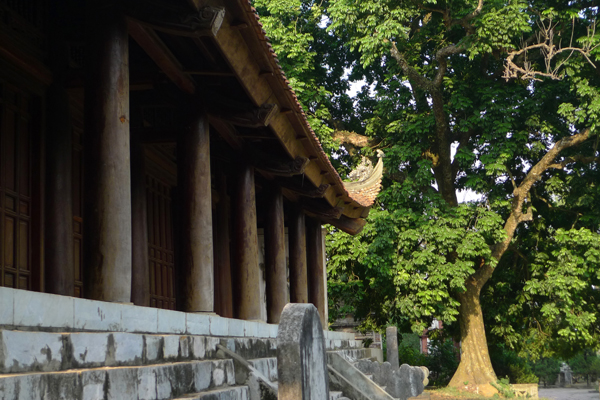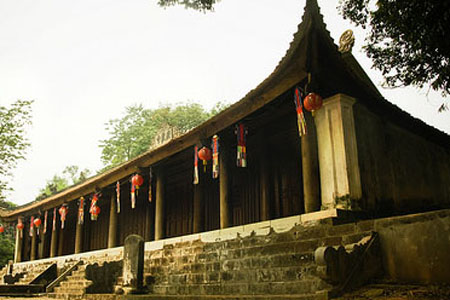Tram Gian Pagoda (Chua Tram Gian) (100-compartment pagoda) or Chua So. Official name: Quang Nghiem Tu. In Thien Son village (Hoai Duc district, Ha Tay). Built on a hill some 50 meters high (Ma Son range). Surrounded by secular trees, especially pine trees of several centennials. Built by Friar Nguyen Nu (popular name: Duc Thanh Boi, (the Saint Boi), native of Boi Khe village, Thanh Oai, under the Tran dynasty (1225 - 1400). Destroyed by the Ming invaders in the XVth century. Only two stone dragons on the perron are left from the time of the Tran reign. The reconstruction dates back to the Le (XVII - XVIIIth centuries) dynasty in Restoration time. On the slope is a bell tower with two floors and eight roofs (bell cast in 1794 engraved with text written by historian Phan Huy Ich).

There are here a big drum and a large bronze gong (1m2 long, 0m60 high) cast in 1749. If the space between 4 columns is considered a compartment, then the pagoda has 104 compartments. There are 104 statues generally made of wood, among them that of Marshall Dang Tien Dong, a Tay Son officer who participated in the offensive for the liberation of Thang Long (Hanoi) in 1789. The two corridors shelter two series of high-reliefs on lacquered wood: 18 Arhats (La Han) and 10 Kings of the Hell (Diem Vuong).



